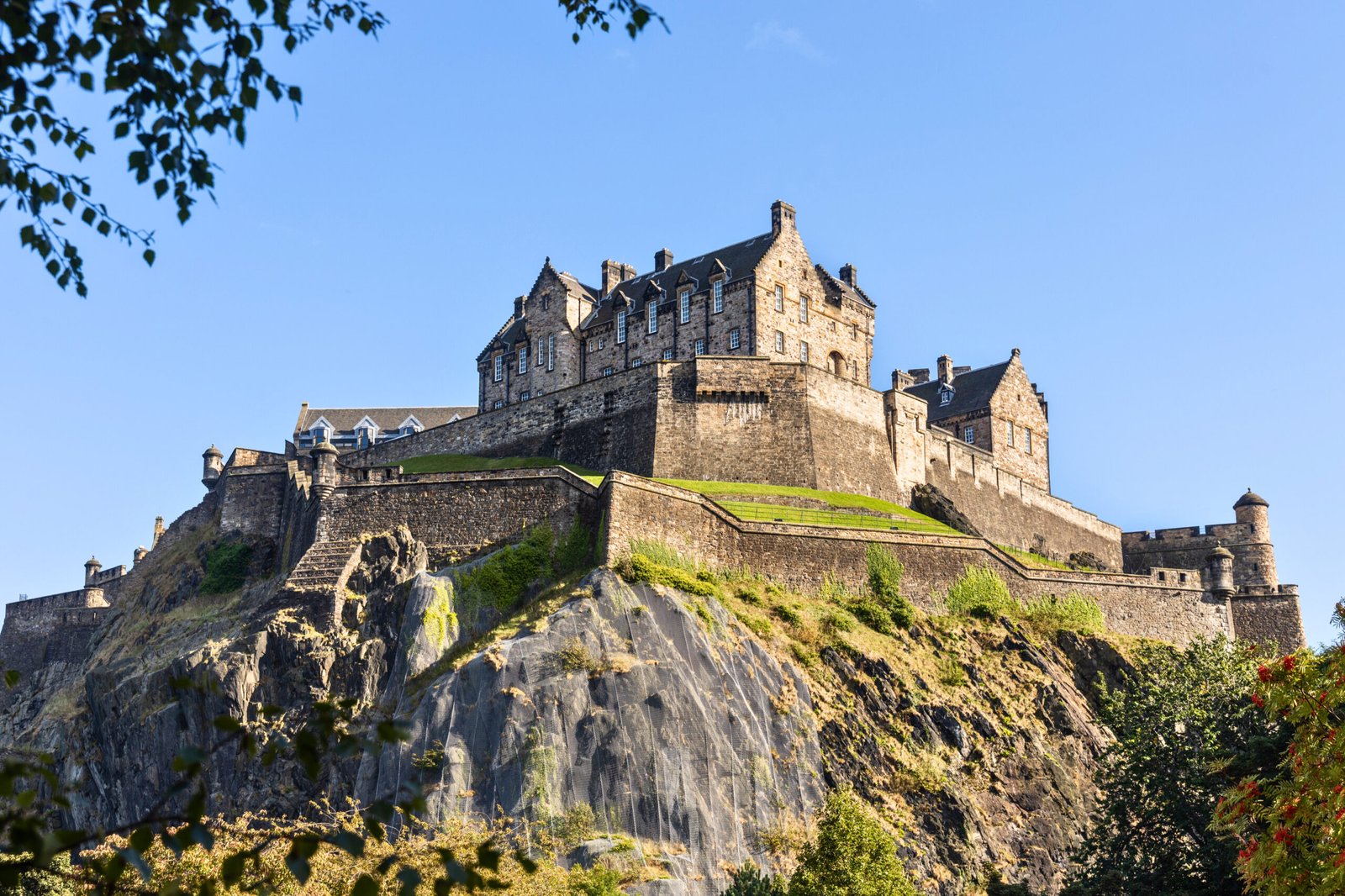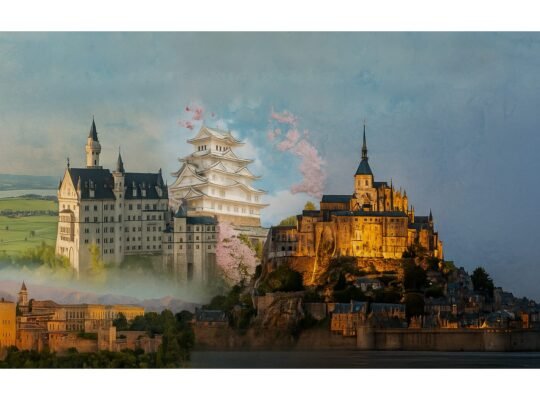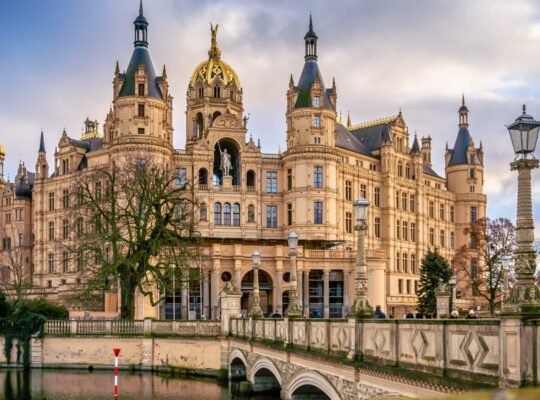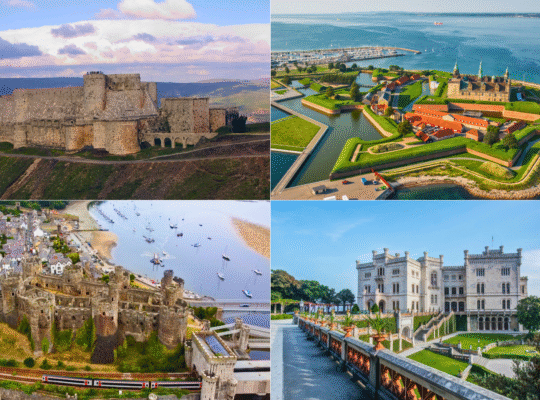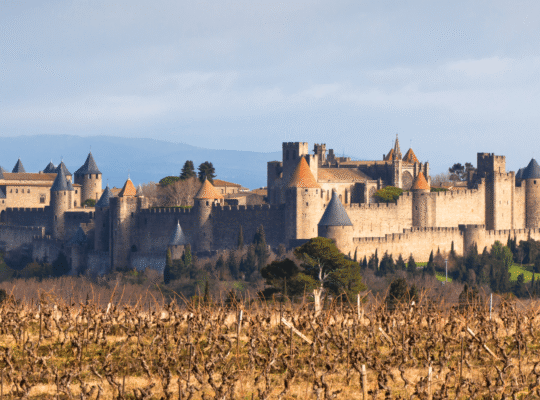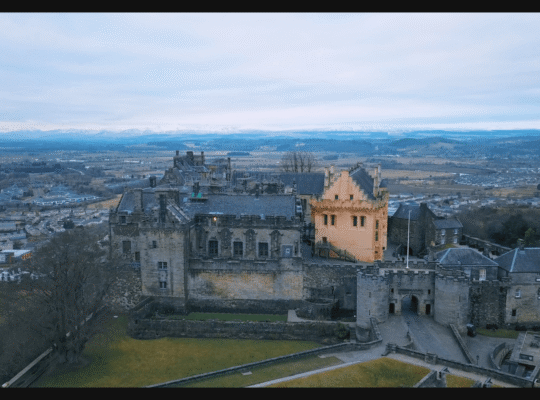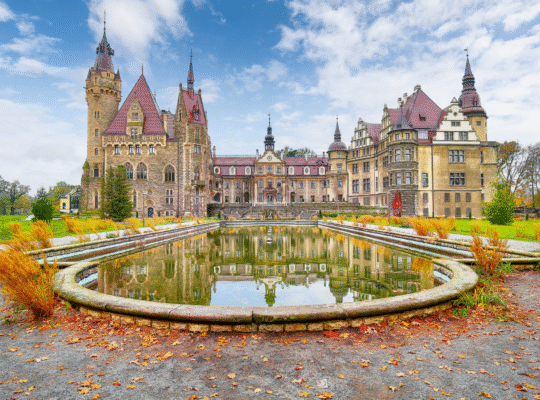When I first went to Edinburgh Castle, I wasn’t expecting to feel anything, really.
Just another historic site, I thought—a good photo, maybe a few plaques. But as I walked up Castlehill and the skyline shifted, I stopped. It wasn’t the size of Edinburgh Castle that struck me—it was the silence it seemed to carry. The kind that comes from centuries of watching.
It sits there, solid and still, above the city’s noise. You feel small when you see it. Not in a bad way. Just aware—of time, of stories, of people who once stood exactly where you’re standing now.
There’s a weight to the place, but it isn’t heavy. It’s alive. Every stone has seen things. Battles, betrayals, coronations, and farewells. And all of that lives on somehow, in the walls, in the wind, in the way the sun hits the ramparts in the late afternoon.
This guide isn’t just about where to go or what to see. It’s about why this place still matters—and why, even if you forget the details, you won’t forget how it made you feel.

Quick Facts
📍 Location: Edinburgh, Scotland (on Castle Rock)
🏗️ Construction Period: 12th century (earliest recorded royal building)
🏰 Architectural Style: Medieval, Gothic, and Renaissance influences
🎭 Famous For: Crown Jewels of Scotland, Stone of Destiny, epic views, royal history, and ghost stories
👑 Notable Residents: Mary, Queen of Scots, King David I, King James VI
🏆 UNESCO Status: Part of the Old and New Towns of Edinburgh UNESCO World Heritage Site
🌐 Website: www.edinburghcastle.scot

The History of Edinburgh Castle – Where Battles Shaped a Nation
Stand in the courtyard long enough and you start to feel it—that quiet sense that this place has seen everything.
Before the castle we know today, there was just rock. Castle Rock. A volcanic plug, steep and commanding, rising out of the city like a natural fortress. People lived up here even in the Iron Age—clinging to its edges, building timber huts, and lighting fires that must have looked like stars from below. That’s how far back this story reaches. Longer than written memory.
Then came kings. In the 12th century, David I, son of Scotland’s Queen Margaret, turned this place into a proper stronghold. It wasn’t just strategic—it was symbolic. A statement that this land was watched, held, and protected.
But peace was always fragile.
In 1296, Edward I of England stormed the castle. He took the Stone of Destiny with him—a move that felt more like an insult than a victory. Scotland’s fight for independence was just beginning, and this castle sat right in the middle of it. In 1314, a small group of Scots, led by Thomas Randolph, scaled the vertical cliffs under cover of night. No one expected it. They took back the fortress with ropes, courage, and sheer resolve.
It was the first of many turning points.
Over the next few centuries, the castle became a kind of political weathervane. Whoever controlled it controlled the capital. And in many ways, the fate of Scotland. During the Wars of the Three Kingdoms, it stood its ground. When Oliver Cromwell’s troops arrived in 1650, the castle finally fell—but only after fierce resistance.
And there’s more.
In 1566, Mary, Queen of Scots, gave birth to her son, James VI, within these walls. The room is still there, tucked behind thick stone. That baby would become the first monarch to rule both Scotland and England—James I of a united crown. One birth, in one cold chamber, shifted the entire course of British history.
Later came the Jacobites. In 1745, they marched toward the city, trying to reclaim the throne. But this time, Edinburgh Castle held strong. No surrender. No breach.
And so it survived—not just the physical sieges, but the political storms, the royal dramas, the shifting tides of power.
You could say Edinburgh Castle is built from stone. But that wouldn’t be quite right. It’s built from turning points, from decisions made in candlelit rooms, from cries echoing off its battlements.
Walk its grounds today, and you’re not just seeing history.
You’re walking through the very place where Scotland’s future was shaped.
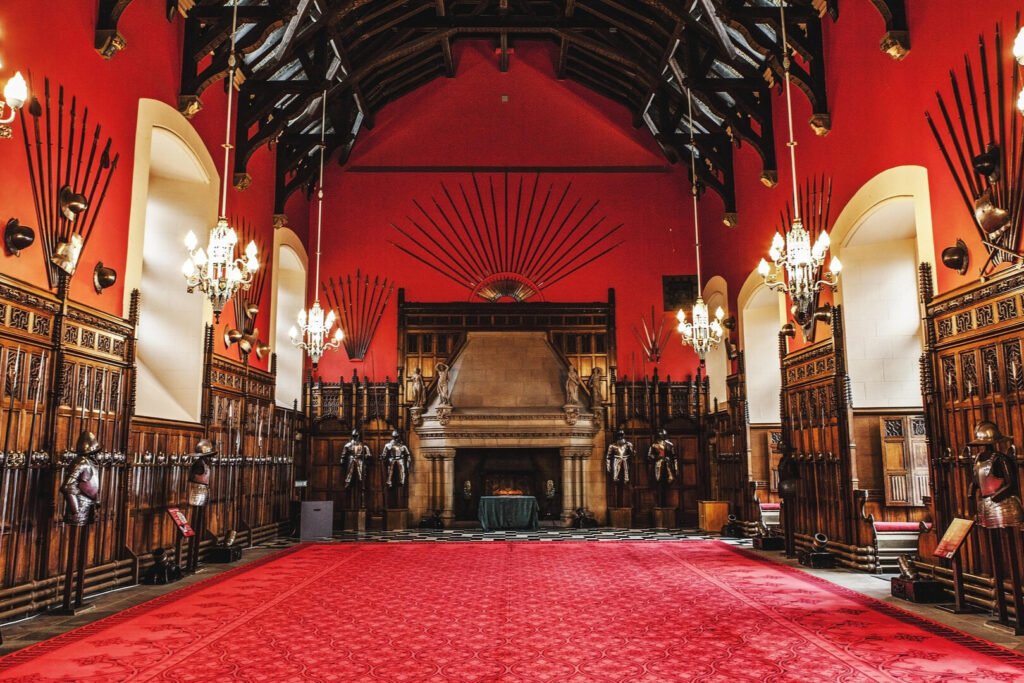

Myths & Legends – Echoes in the Stone
Not everything about Edinburgh Castle can be explained. For all its royal chronicles and military records, some stories come wrapped in mist and mystery. These are the tales that linger in the chill of the stone corridors, that prick the skin on the back of your neck. Because in this fortress, legend lives just beneath the surface.
The Lone Piper Beneath the Castle
Years ago, tunnels were rumored to run beneath the castle, connecting it to the Royal Mile and beyond. To test the theory, a young piper was sent below—playing his bagpipes as he walked so that those above could track his path.
But halfway through, the music stopped.
Search parties descended, but the boy was never seen again.
To this day, visitors report the faint, sorrowful sound of pipes drifting up from the ground. Always distant. Always just out of reach.
Was it a collapse? A wrong turn? Or something the stone swallowed whole?
The Headless Drummer
When danger neared, soldiers of the past say a headless drummer would appear atop the ramparts, pounding out a ghostly warning. No one knows who he was—or how he died—but his spectral drumbeat has become one of the castle’s most ominous legends.
He was reportedly seen just before Oliver Cromwell’s siege in 1650.
Whether you hear the sound or not, it’s easy to imagine it when the fog rolls in and the castle stands silent above the city.
The Phantom Prisoners and Lost Souls
Over centuries, thousands were imprisoned within these walls—from foreign captives to petty thieves. Some died here. Some were tortured. Many left marks—scratched initials, painted symbols, desperate graffiti. Some say they left more than that.
Cold drafts where there should be none. Shadows flitting past empty doorways. A chill, inexplicable dread in the old dungeons.
The castle doesn’t just hold history—it holds residue. And if you’re the kind who notices these things, you might just feel watched.
The Stone of Destiny – A Legend of Power
Not all legends here are ghostly. Some are regal.
The Stone of Destiny, now housed in the Crown Room, is no ordinary rock. For centuries, it was used in the coronation of Scottish monarchs—a sacred symbol of sovereignty and power.
When the English seized it in 1296 and took it to Westminster Abbey, it was a deep wound to Scottish pride. In 1996—700 years later—it was finally returned home.
Today, it still plays a role in crowning British monarchs. But when you stand before it at Edinburgh Castle, it feels firmly and fiercely Scottish.
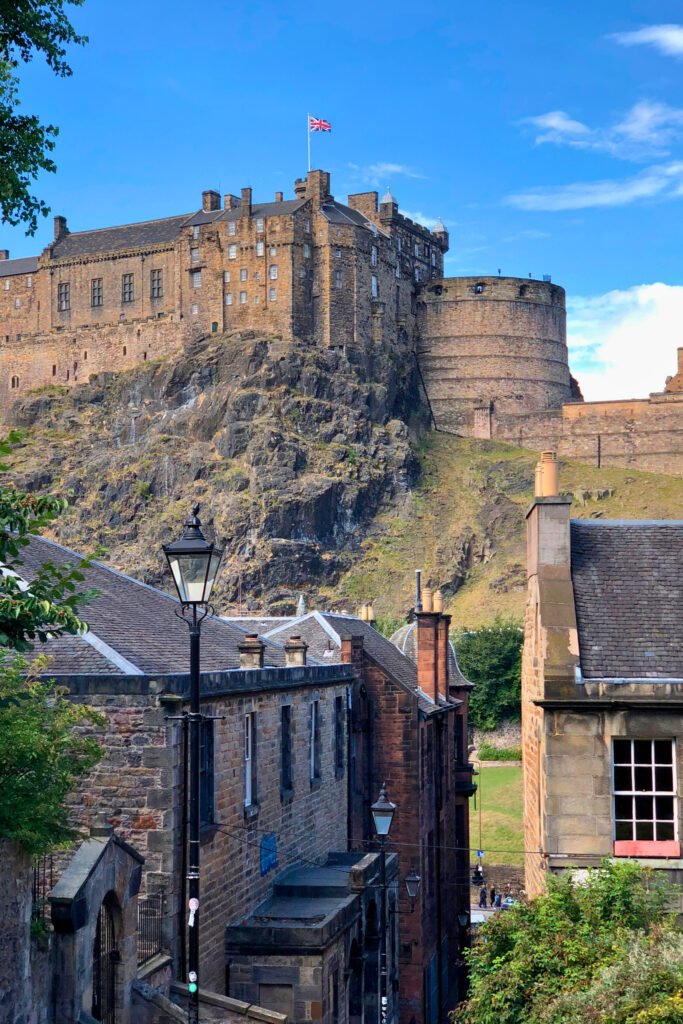
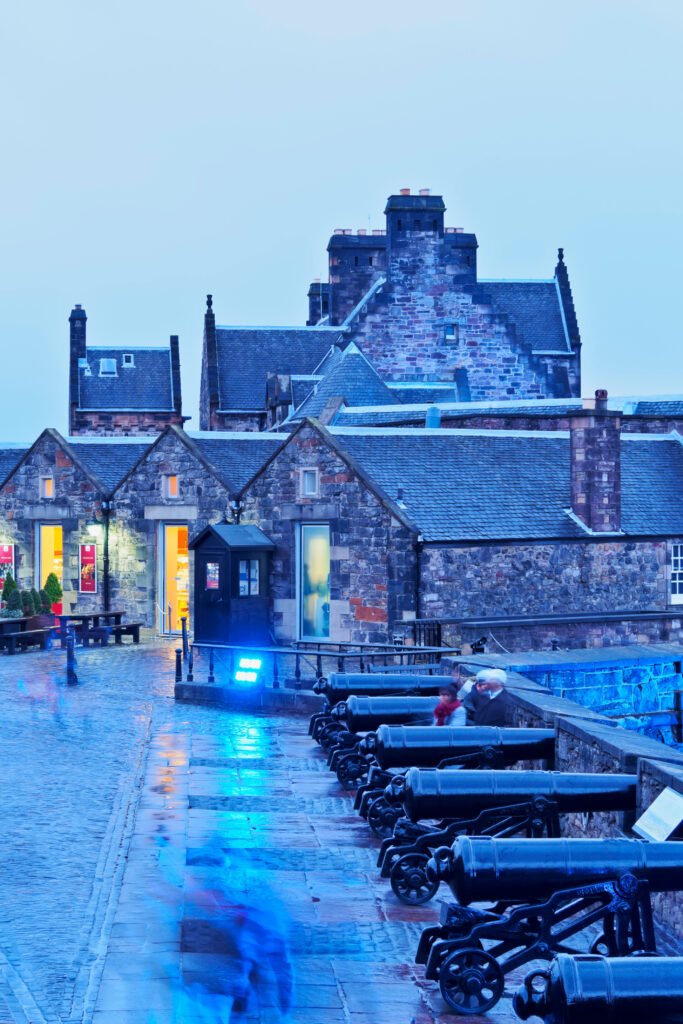

Architecture & Design – Built for Battle, Framed for Majesty
From a distance, Edinburgh Castle looks like it was born from the rock itself—an outgrowth of the volcanic cliffs of Castle Rock. But up close, it’s a layered puzzle of centuries-old craftsmanship, adapted and reimagined through time.
A Fortress Above All
The first thing that hits you? Its elevation. Castle Rock rises 130 meters above sea level, with cliffs on three sides—nature’s own defense system. For any would-be invader, it was a nightmare. Only the eastern approach, where the Esplanade now sits, allowed entry—and even that was reinforced with portcullises, murder holes, and battering-resistant gates.
It wasn’t just a castle. It was an obstacle course designed to keep enemies out.
Walls That Tell a Story
Step through the Portcullis Gate and the fortress unfolds like a stone novel. Some buildings speak of medieval strength—the rugged Half Moon Battery with its angled defenses. Others whisper of Renaissance refinement—like the graceful archways and ornamental carvings of the Royal Palace.
Every stone, every wall, every turret tells a chapter. And the beauty? They don’t match. Each layer reflects the era in which it was built, showing how the castle evolved through war, peace, and royal politics.
Don’t Miss These Highlights:
🏰 The Great Hall: Commissioned by James IV around 1510, this was where grand banquets, councils, and ceremonies took place. Look up—the hammerbeam roof, carved from oak and entirely nail-free, is a work of engineering and elegance. Swords, shields, and suits of armor line the walls, giving the whole room a theatrical intensity.
⛪ St. Margaret’s Chapel: This tiny chapel is the oldest surviving building in Edinburgh, dating back to the 12th century. Built by King David I in honor of his mother, Saint Margaret, it’s humble, peaceful, and hauntingly beautiful. Amid the fortress’s might, this little stone sanctuary offers a pause—a place for reflection.
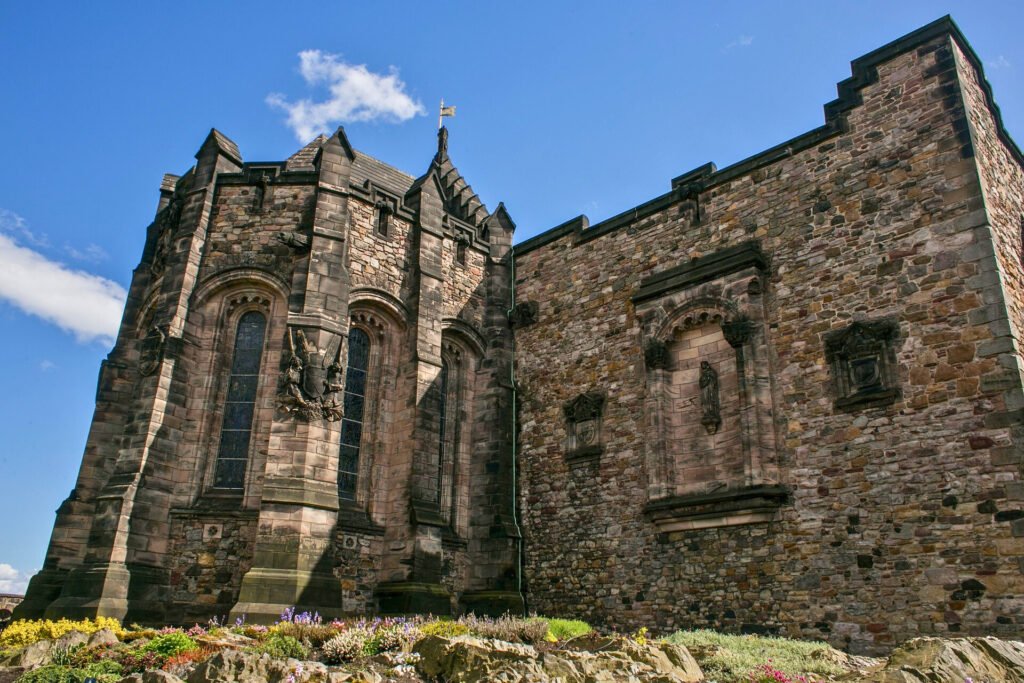
👑 The Royal Palace: These chambers housed kings and queens, and most famously, it’s where Mary, Queen of Scots gave birth to James VI in 1566. The rooms are intimate by modern palace standards but rich with detail: carved stone fireplaces, heavy wooden doors, and windows that once looked out onto a kingdom.
💥 Mons Meg: This 15th-century cannon is not just a relic—it’s a beast. Weighing six tons and able to fire 150kg stone balls over two miles, Mons Meg was a medieval superweapon. Today it sits silently, aimed into the sky, a reminder of how power was projected in iron and fire.
🕐 The One O’Clock Gun: Since 1861, this cannon has fired at 1:00 p.m. every day (except Sundays), allowing ships in the Firth of Forth to set their clocks. Locals still check their watches by it. Tourists still jump when it fires. It’s one of the city’s quirkiest and most enduring traditions.

Visiting Edinburgh Castle – Your Guide to an Epic Day
If you only have time for one landmark in Edinburgh, make it this one. But don’t just show up and breeze through—Edinburgh Castle isn’t a quick tick on a checklist. It’s layered, dramatic, and yes, a little overwhelming if you don’t plan ahead.
Best Times to Go
Go early. Before the buses arrive. Before the tour groups gather. If you’re lucky, you’ll get a few quiet moments in the upper courtyards when the light is soft and the breeze hasn’t yet turned. Morning visits also give you more time to wander, and trust me, you’ll want it.
Spring 🌸 and early autumn 🍂 are sweet spots. The weather is more forgiving, the crowds are lighter, and there’s still plenty of daylight to explore. August can be magical too—if you don’t mind people—especially during the Royal Edinburgh Military Tattoo, when the Esplanade becomes a stage and the castle turns into a backdrop of fire and sound.
Getting There
The castle crowns the top of the Royal Mile, which means it’s uphill no matter your route. But the walk is part of the story: winding past shops, street performers, and centuries-old closes. If you’re arriving by train, Waverley Station is just below. From there, it’s a 10-minute hike—with plenty to distract you on the way up.
If you’re flying in, the Airlink bus or tram from the airport drops you near Princes Street. From there, you can walk—or hop a cab if you’re saving your legs for the castle.
Don’t bother driving. There’s no parking at the castle itself, and the surrounding streets are not driver-friendly unless you know exactly where you’re going.
Accessibility
It’s a medieval fortress—built for defense, not convenience. That said, there’s a mobility vehicle from the entrance up the hill, and staff are helpful if you need alternate routes. Some areas are uneven or narrow, but several key sites are accessible. Check in when you arrive—they’ll walk you through it.
Tickets and Tours
Book your tickets online. Seriously. Not only do you skip the queue, but it also guarantees your entry on busy days. Adult tickets are around £21.50, and there are discounts for children, seniors, and families. Please check the official website for the most up-to-date prices and operating hours.
Want context? Go for a guided tour—they run frequently and are usually led by folks who know how to tell a good story. Prefer your own pace? The audio guide is solid, and you’ll have more freedom to linger where it matters most to you.
What to See Inside
Everyone rushes to the Crown Jewels—and they’re stunning—but try to take your time getting there. The Great Hall, with its wooden beams and old weapons on the walls, is worth a slow look. St. Margaret’s Chapel is smaller than you might expect, but it holds a quiet kind of reverence. And if you’re into cannons, Mons Meg is a medieval monster you won’t forget.
Stick around for the One O’Clock Gun if you can. Even when you’re expecting it, the sound echoes across the city in a way that feels… historical.
Tips Most People Miss
- Bring layers. Weather shifts quickly here.
- Wear shoes that grip. Cobblestones can be slick.
- Give yourself time. Two hours is a minimum. Three is better.
- Don’t skip the views. Some of the best panoramas of Edinburgh are from the battlements.
And above all, don’t rush. This isn’t just a museum—it’s a living piece of Scotland’s story. Let it unfold in its own time.
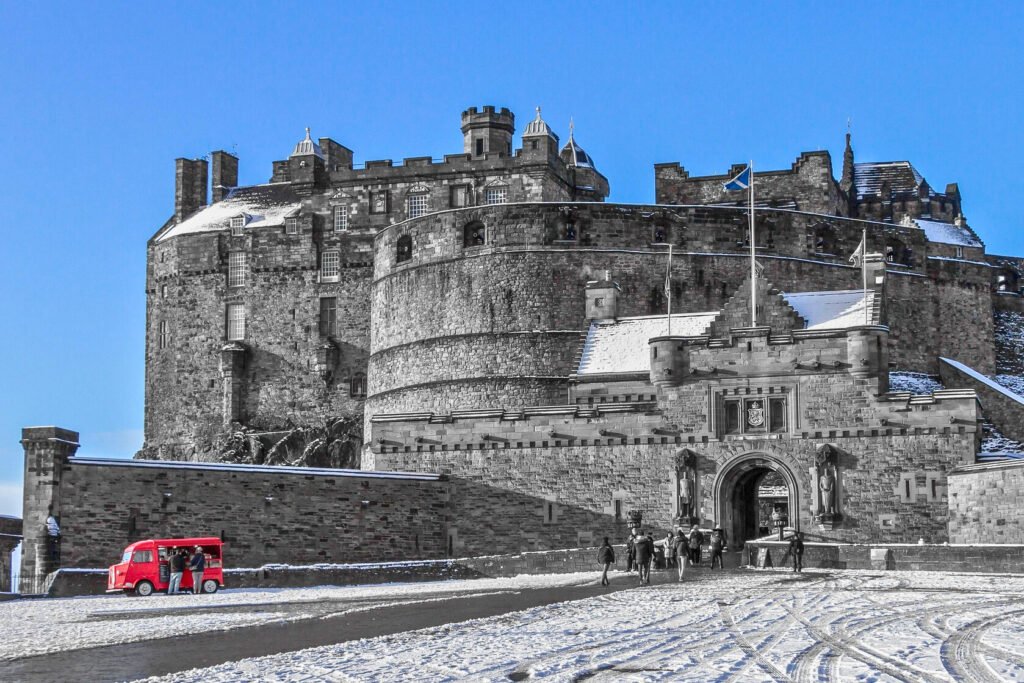

Nearby Attractions & Things to Do Around Edinburgh Castle
You’d think standing atop Castle Rock would be the high point of your day—and in many ways, it is. But the beauty of visiting Edinburgh Castle is that the adventure doesn’t end at its gates. The surrounding city is like a well-worn tapestry: rich, layered, and full of surprises for those willing to explore just a bit further.
The Royal Mile: Where Every Stone Has a Story
As you leave the castle and step onto the Royal Mile, you’re not just walking down a street—you’re stepping into a living museum. This historic thoroughfare runs from the castle down to Holyrood Palace, with centuries of drama played out along its cobbled stretch. Pop into St. Giles’ Cathedral to admire its Gothic crown spire, browse traditional kilt shops, or duck into the Writer’s Museum—hidden in Lady Stair’s Close—for a quiet moment with the words of Burns, Stevenson, and Scott.
Don’t be afraid to go off script here. Some of the best experiences come from wandering into a quiet alley (called a “close”) and discovering a courtyard café or forgotten monument.
Arthur’s Seat: The City’s Wild Heart
If you’re craving open air, pack a snack and take a short walk or bus ride to Holyrood Park. Climbing Arthur’s Seat—an ancient volcano with panoramic views—is one of those “only-in-Edinburgh” experiences. The hike takes around 45 minutes depending on your pace, and while it’s steep in places, the payoff at the summit is breathtaking: the North Sea glistening in the distance, Edinburgh’s rooftops spread like a map, and the castle itself, a silhouette against the sky.
Not up for the full climb? There are gentler trails through Salisbury Crags, which offer equally dramatic views with less strain on the knees.
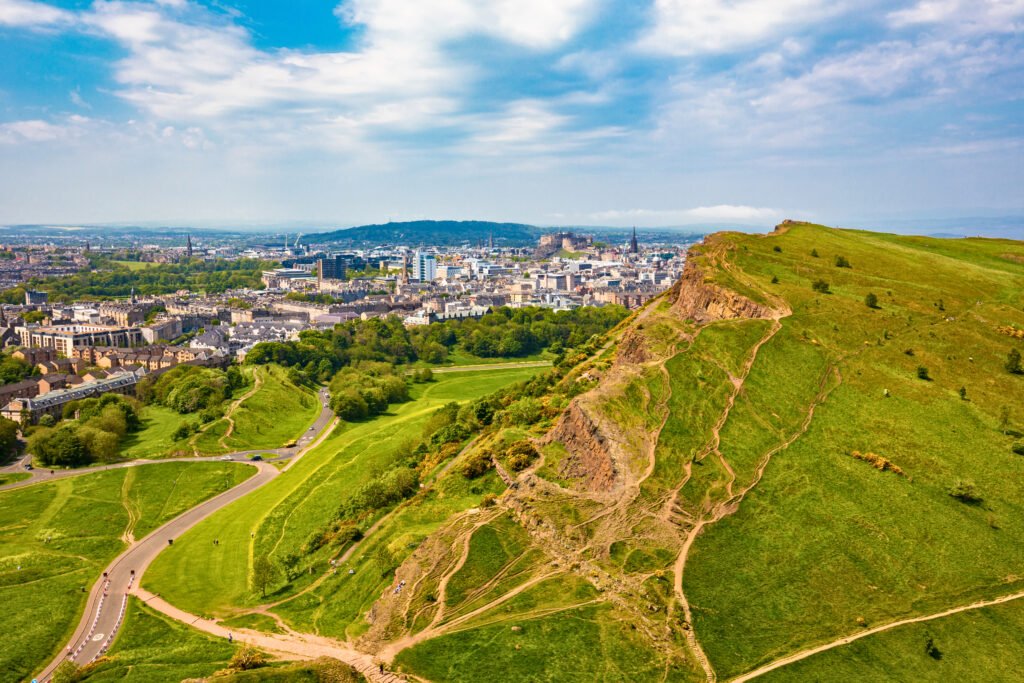
Holyrood Palace: Royal Elegance with a Dark Edge
Down at the far end of the Royal Mile sits the Palace of Holyroodhouse. Still used by the monarchy today, this 16th-century palace is a study in contrasts—opulent state rooms upstairs, and the haunted ruins of Holyrood Abbey just outside. History buffs will be drawn to the chambers of Mary, Queen of Scots, especially the room where her secretary was murdered in front of her eyes. It’s grand, eerie, and undeniably human.
If the timing’s right, you might even catch a ceremonial event or exhibit within its walls—so check ahead.
The National Museum of Scotland: Where Curiosity Comes to Life
Tucked into the heart of the Old Town, this museum is one of Edinburgh’s best-kept secrets (despite being massive). It’s the kind of place where you can go from marveling at ancient Egyptian coffins to standing beneath a suspended airplane in the aviation gallery. Kids will love the interactive exhibits; adults will appreciate the thoughtful curation and depth.
And here’s a tip: head up to the museum’s rooftop terrace. It’s free, quiet, and gives one of the most underrated views of the city.
The Scotch Whisky Experience: Raise a Glass to History
Just steps from the castle’s drawbridge, you’ll find this immersive, sensory journey into the world of whisky. It’s not just about tasting—it’s about understanding. You’ll hop on a barrel ride (yes, really), learn about regions and flavors, and finish off with a guided tasting in one of the world’s largest whisky collections.
If you’re a fan, you can book a more in-depth tasting or even a whisky and food pairing experience. If you’re not (yet), this place might just convert you.
Bonus: Don’t Miss Victoria Street & Grassmarket
Just a short walk downhill from the castle, Victoria Street might be the most photogenic street in Edinburgh. Its colorful curve inspired Diagon Alley in the Harry Potter series, and it’s packed with independent shops, bookstores, and cafés. Continue on to the Grassmarket, a lively square once known for public executions, now known for pubs with outdoor terraces and killer views of the castle lit up at night.

Final Thoughts: Why You Should Visit Edinburgh Castle
If you’re planning a trip to Scotland, Edinburgh Castle really should be at the top of your list. It’s not just one of the most famous landmarks in the country—it’s a place where history, architecture, and sweeping views all come together.
You don’t need to be a history expert to appreciate it. Walking through the castle grounds, seeing the Crown Jewels, stepping inside St. Margaret’s Chapel, or simply standing by the cannons and looking out over the city—it’s all genuinely memorable. It gives you a better sense of how Scotland’s past shaped its present.
Whether you’re visiting for the stories, the photo opportunities, or just to tick off a must-see site, Edinburgh Castle delivers. It’s well worth the time, and chances are, you’ll leave with more than a few good photos—you’ll leave with perspective.
💬 We’d love to hear from you!
Have you explored Edinburgh Castle? Did a ghost story give you goosebumps, or did you catch that perfect golden-hour photo from the battlements? Please share your favorite moments in the comments or tag us on Instagram @CastleQuestChronicles!
👉 And if this enchanted fortress sparked your wanderlust, don’t miss our deep dive into Neuschwanstein Castle: The Fairytale Fortress of Bavaria.
Because the world is full of castles… Because once you fall in love with castles… there’s no turning back. 🏰✨
📸 If this article sparked your curiosity about the castles, follow along. We are also on Instagram, Pinterest, Facebook, and X. More castles (and more stories) are just around the bend. Explore all our castle adventures here!

